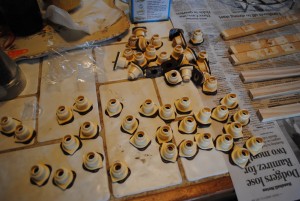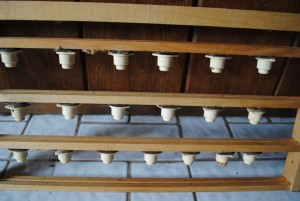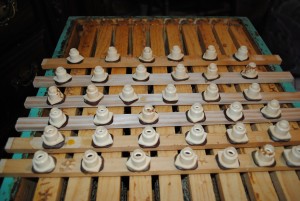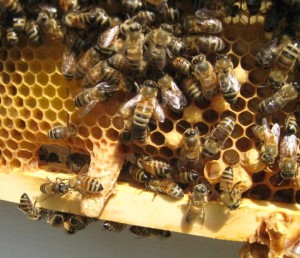Crazy Swarms
With everything going on from monitoring Nuc’s, creating new Nuc’s, keeping honey supers on the hives and making sure that any hive that swarmed has a viable, new queen, I often farm out swarm calls to folks that I know. The primary exceptions to this rule are my own swarms (I want those genetics) and swarms from locations that I’ve never collected a swarm from (again, a chance for new genetics.) Over the past two weeks, I’ve had some really wild swarm calls! I’ve outlined a few of them below.
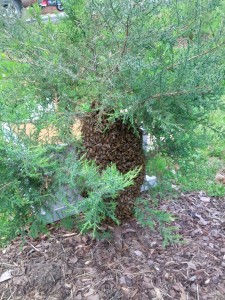
I received a call from a fellow way out in the West End, talking about a colony of bees trying to set up home in a tree by his driveway. Of course, this was just a swarm waiting to find a new home and I decided to go get it (I’d never collected a swarm that far out on River Road before.)
When he said ‘tree’, he really meant ‘sapling’! These bees were no more than 6 inches above the ground (the bottom of the swarm was anyway.) Not only that, but they were pretty much all on the trunk of the small thing! There was no way to shake these bees, that was for sure. Fortunately, my pop’s old rule of ‘always have a piece of rope and a 5 gallon bucket for any task’ saved the day. Using the 5 gallon bucket, I literally scooped the majority of the ball into the bucket (it just plopped into the bottom) and subsequently poured the bees into the waiting hive. I then repositioned the hive to point to the tree and the rest soon followed! Bonzai!
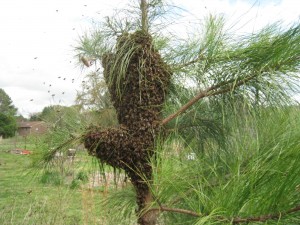
The next swarm was in my own backyard! I knew these gals were going to swarm and had already taken a fair number of bees to create a few nuc’s, but figured they would go anyway. The best thing about this swarm was that it marks the first time that I have actually SEEN a colony swarm! I’ve heard a million folks describe it, but I had never seen it (odd, given the amount of time I am around hives.) It was awesome as they roared through the air and finally came to rest on one of my trees. In the end, it was nature’s way of splitting my hive for me.
Finally, one of the wildest swarms happened in one of my yards out in Charles City. I had been watching the hive since it had a White queen and wanted to preserve the genetics. But, apparently I wasn’t watching closely enough. When I stopped by to check honey supers, I noticed that one of the hives was bearding. It was sort of cool, so I thought this was odd. I took a closer look and noticed that they weren’t really spilling out of the entrance, but hanging on the BOTTOM of the bottom board!
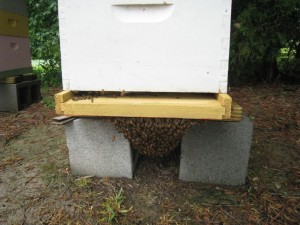
In truth, I didn’t recognize it as a swarm on that day and just wrote it off to weird behavior. I was in a hurry to consolidate a few Nuc’s for sale and check on some queens that I was rearing. But, those bees kept nagging at me. The next day at work, I couldn’t stop thinking about them. Finally, I left work and headed back out to Charles City to get them. I figured it MUST be a swarm. It didn’t make sense otherwise. I had to take the hive apart, so that I could lift up the bottom board and shake them into a nearby hive. Several of the honey bees fell to the ground around the hive stand, but I went to look at the bees in the hive. I didn’t see the queen, so I returned to the hive stand with my brush and a piece of paper to sweep up the remnants. There, right before my eyes, was that daggone white queen crawling around with a few of her fallen brethren!!! Heh. I picked her up and placed her in the hive. One more for the books!

